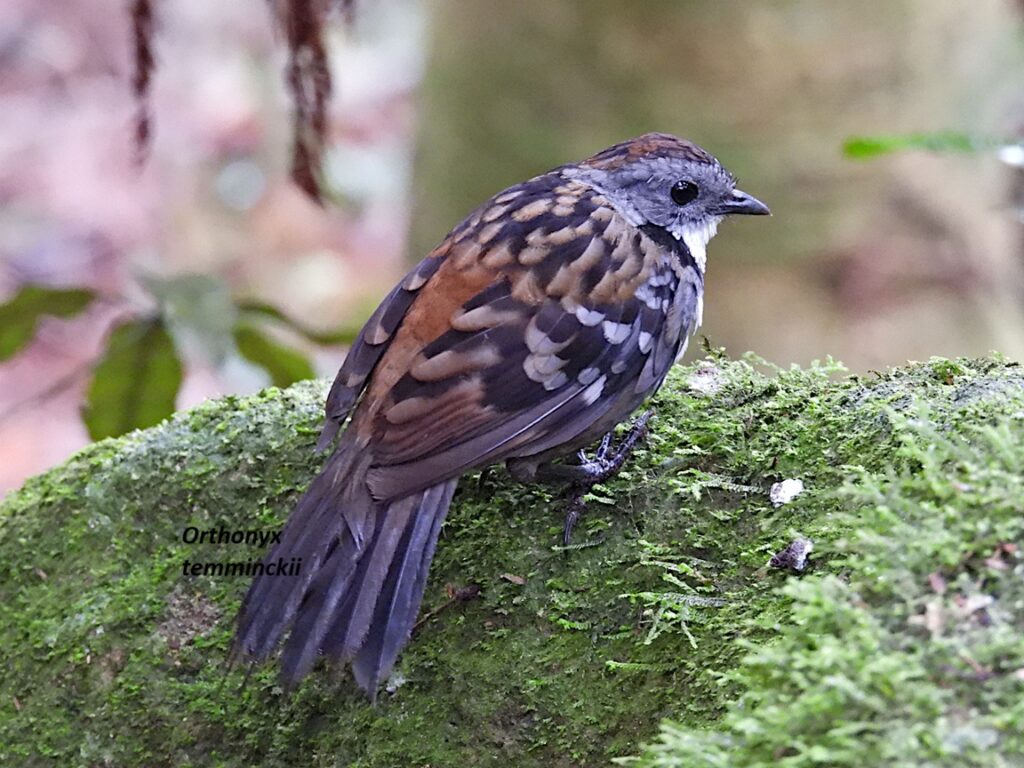Introduction
Discover the fascinating world of Orthonyx temminckii, a unique and captivating bird species native to the dense rainforests of eastern Australia. Known commonly as the Australian Logrunner, this bird stands out with its specialized foraging behavior and distinct vocalizations. It plays an essential role in the ecosystem, highlighting the intricate balance of its natural habitat.
The is celebrated for its remarkable adaptations that allow it to thrive in its lush environment. From its strong legs designed for ground scratching to its well camouflaged plumage, this bird is a true marvel of nature. In this article, we’ll delve deeper into its habitat, behavior, and significance, offering a comprehensive look at one of Australia’s most interesting avian species.
What is Orthonyx temminckii?
Orthonyx temminckii, commonly known as the Australian Logrunner, is a small ground dwelling bird native to the rainforests of eastern Australia. It is a member of the Orthonychidae family, a group of birds known for their unique adaptations to life on the forest floor. The species was named after the Dutch zoologist Coenraad Jacob Temminck in recognition of his contributions to natural history.
Orthonyx temminckii in Its Natural Habitat
Theinhabits subtropical and temperate rainforests, primarily along the eastern coast of Australia, spanning from Queensland to New South Wales. These forests provide the bird with abundant food, shelter, and breeding opportunities. The dense undergrowth and leaf litter are crucial for the Logrunner’s foraging habits, as it uses its strong legs to scratch the forest floor in search of insects, spiders, and other invertebrates.
The bird’s reliance on undisturbed habitats underscores the importance of rainforest conservation. Deforestation and habitat fragmentation pose significant threats to making it a species of conservation concern. By protecting these rainforests, we not only safeguard the Logrunner but also preserve a rich biodiversity that benefits the planet.
Unique Behavior and Adaptations of Orthonyx temminckii
One of the most distinctive traits of is its ground scratching technique for feeding. Unlike most birds that use their beaks to search for food, the Logrunner employs its robust legs and sharp claws to dig through leaf litter, exposing hidden prey. This behavior is a testament to its evolutionary adaptation to a ground dwelling lifestyle.
Another notable feature is its vocal communication. The produces a series of whistles and calls that serve various purposes, from attracting mates to marking territory. The male and female often engage in duets, a rare behavior that strengthens pair bonds and ensures successful breeding.
Breeding and Life Cycle of Orthonyx temminckii
Breeding season for typically occurs between September and February. During this time, the female constructs a dome shaped nest on the ground, cleverly camouflaged with leaves and twigs. She lays one to two eggs, which she incubates for about 18 days.
Once the chicks hatch, both parents participate in feeding and protecting their young. The chicks grow rapidly and fledge within three weeks, an impressive feat given the vulnerability of ground nesting birds. This rapid development is critical for survival, as ground nests are at risk from predators such as snakes and larger birds.
Conservation Challenges for Orthonyx temminckii
While Orthonyx temminckii is not currently listed as endangered, it faces growing threats from human activity. Habitat destruction due to logging, agriculture, and urban expansion has reduced its range, making conservation efforts increasingly vital. Additionally, invasive species such as foxes and cats pose a danger to both adults and their ground-dwelling nests.
Conservationists emphasize the need for habitat protection and reforestation initiatives to ensure the survival of this remarkable bird. Public awareness campaigns and community involvement in conservation efforts can also play a significant role in safeguarding Orthonyx temminckii.
Why Orthonyx temminckii Matters
Orthonyx temminckii is more than just an intriguing bird; it serves as an indicator of rainforest health. Its presence reflects the ecosystem’s integrity, making it a valuable species for ecological monitoring. By studying its habits and behaviors, scientists gain insights into the broader dynamics of rainforest ecosystems.
Moreover, Orthonyx temminckii contributes to the natural balance by controlling insect populations and aiding in the decomposition process through its foraging activities. Protecting this bird ultimately benefits the entire ecosystem, demonstrating the interconnectedness of all species.
Conclusion
Orthonyx temminckii, the extraordinary Australian Logrunner, embodies the wonders of adaptation and survival in a challenging environment. Its unique behaviors and ecological role make it a species worth celebrating and protecting. By understanding its needs and addressing the threats it faces, we can ensure that Orthonyx temminckii continues to grace Australia’s rainforests for generations to come.


